At one time, it looked like communism might have a shot at taking over the world. Today—not so much. Of the nearly 50 countries that were once ruled by the ideology of Marx and Engels, only 5 still follow it today, and only loosely. For those of you with some Cold War nostalgia, here’s a list of all the countries that were once managed under communist governments.
What is Communism?
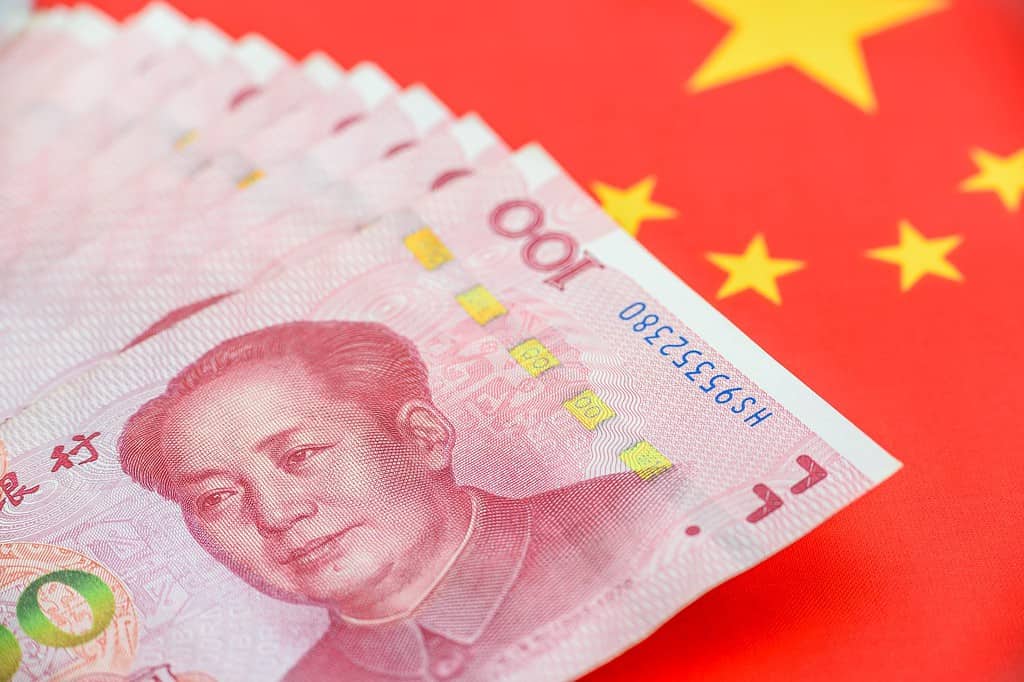
Communism envisions the eventual abolishment of money and governments.
©William Potter/Shutterstock.com
Communism is an ideology built on the writings of Karl Marx and Friedrich Engels. Here are a few of its main ideas:
- Countries go through stages of development, with some social classes dominating others.
- When the workers realize their strength, they can overthrow their oppressors, enjoy the benefits of their own labor, and organize a utopian society that will benefit everyone equally.
- The ultimate goal is to eliminate private property, social classes, and exploitation and eventually do away with money and the government itself.
- Communist regimes typically nationalize industry and infrastructure, abolish most private property, restrict civil liberties, and promote communist insurgencies around the world.
1. Afghanistan (1978-1992)
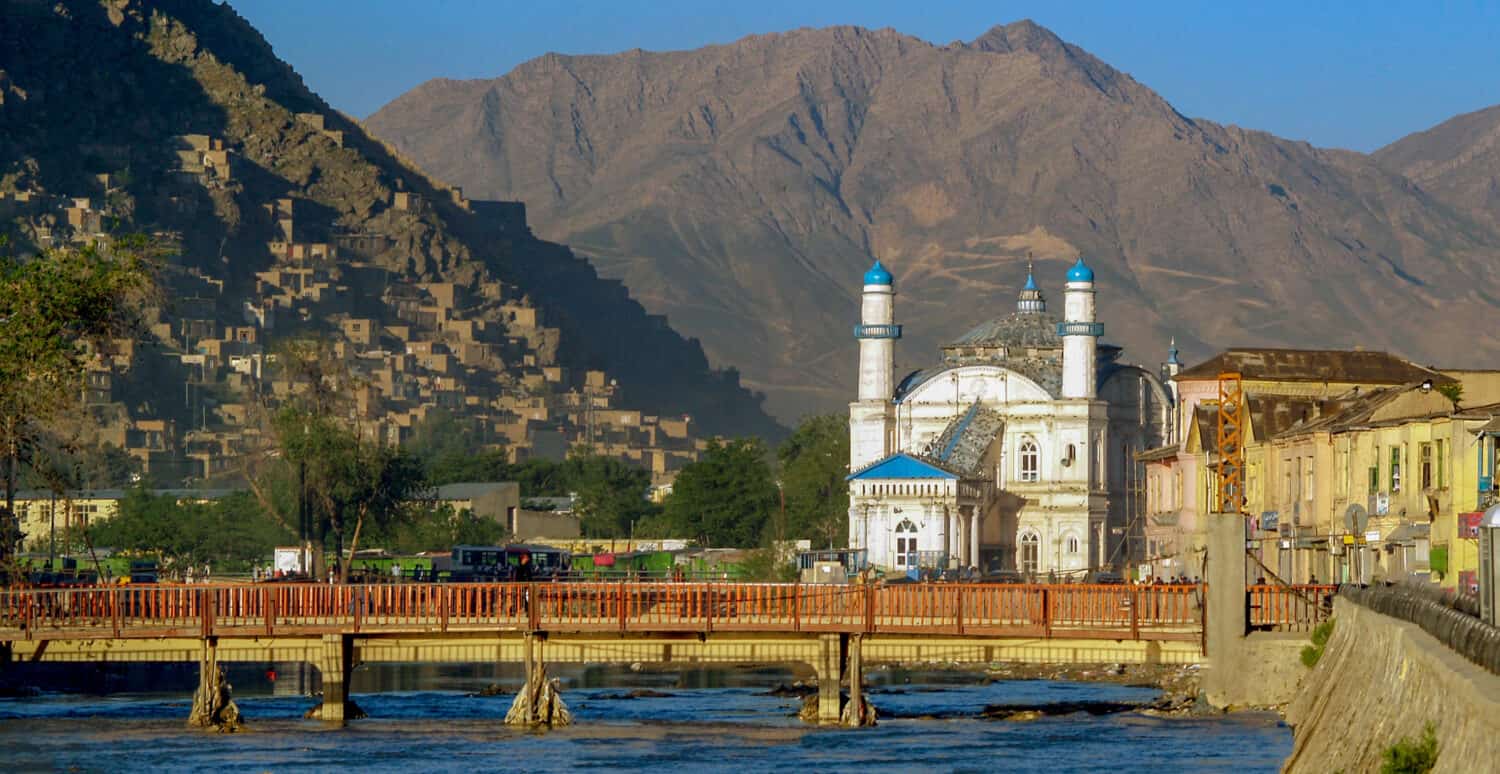
The rugged terrain of Afghanistan makes it challenging for any invader to conquer.
©Mushtaq B/Shutterstock.com
A communist government came to power in Afghanistan in 1978 but had difficulty staying in power. The Soviet Union invaded and helped prop it up for a decade but ultimately withdrew in defeat, and the government collapsed.
2. Albania (1946-1991)

Most people could not visit Albania to enjoy its history and architecture during its communist years.
©iStock.com/Elenakirey
Albania, located in the Balkans, became communist after World War II but was able to maintain its independence from the control of the Soviet Union, unlike most countries of Eastern Europe. It was a reclusive, mysterious country until its government was changed in 1991.
3. Angola (1975-1992)

Angola is a former Portuguese colony.
©Anton_Ivanov/Shutterstock.com
Portugal hung onto its colonial empire longer than most European powers. In 1975 a military coup weakened its grip and Angola was one of the colonies that became independent. Communist Cuba became involved in the country’s civil war to bring a communist regime to power.
4. Armenia (1920-1991)

The capital of Armenia, Yerevan, offers spectacular views of Mountain Ararat, the alleged site where Noah’s ark came to rest.
©iStock.com/marlenka
Armenia was a part of the Russian empire that came under communist control when the Bolsheviks prevailed in the Russian Revolution. After its independence in 1991, Armenia became embroiled in a territorial conflict with Azerbaijan, another newly-freed Soviet republic.
5. Azerbaijan (1922-1991)

Due to their location in the rugged Caucasus Mountains, Azerbaijan and its neighbors have complex geographies and border disputes.
©iStock.com/PeterHermesFurian
Azerbaijan was part of the Soviet Union from 1922-1991. After the collapse of the Soviet Union into 15 separate countries, Azerbaijan over time began to gravitate diplomatically toward the United States, Israel, and Turkey against its neighbors Russia, Iran, and Armenia.
6. Belarus (1920-1991)
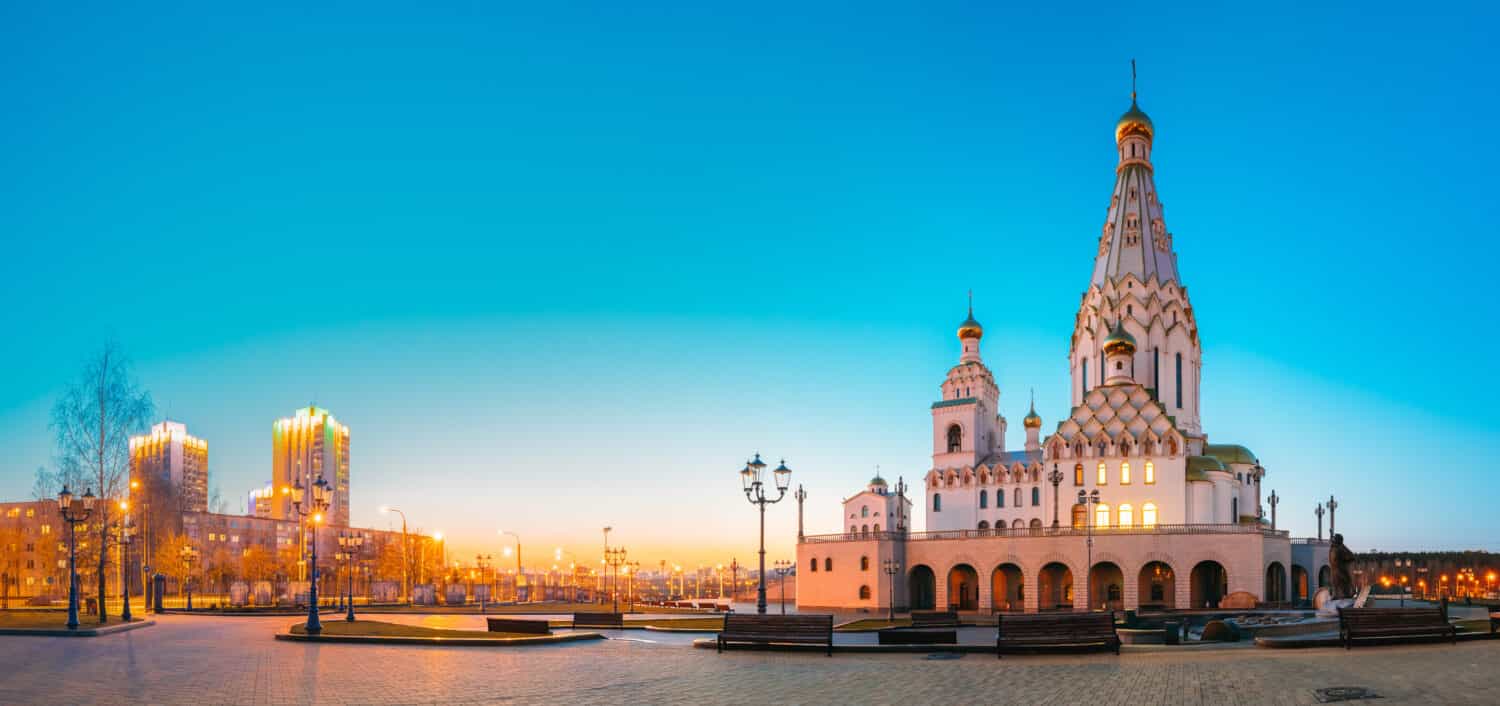
Minsk is the capital of Belarus.
©Grisha Bruev/Shutterstock.com
Belarus was communist as a part of the Soviet Union. It declared independence in 1991 and has been ruled by the same dictator ever since. It is heavily under the influence of Russia, to the point that many people consider it a puppet state.
7. Benin (1975-1990)

Benin was formerly a French colony.
©Masaki ABE/Shutterstock.com
Located in West Africa, Benin is a small country that has endured many social problems and unstable governance since its independence. It experimented with a communist system from 1975-1990.
8. Bosnia and Herzegovina (1945-1992)
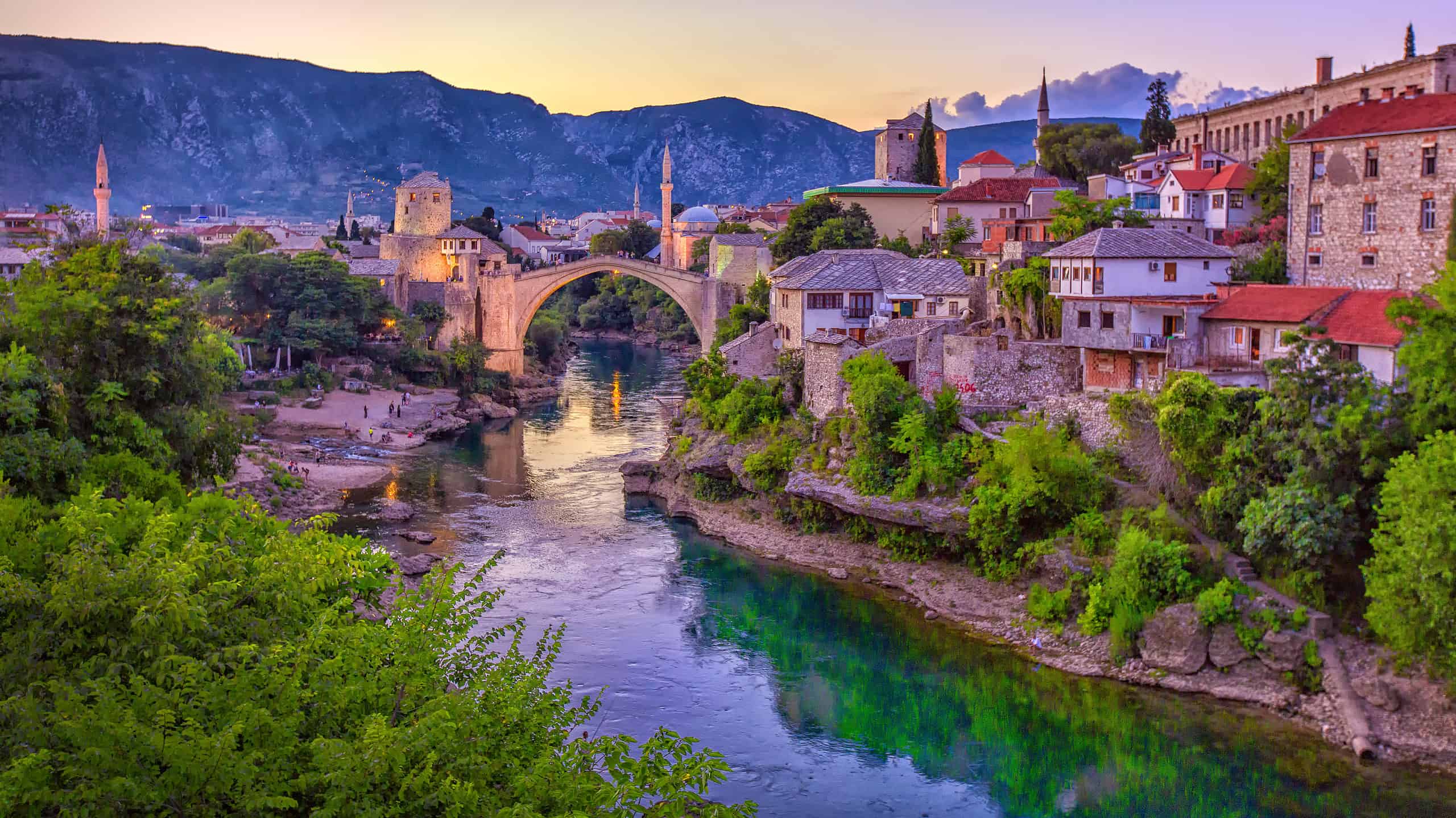
The Mostar bridge in Bosnia and Herzegovina is UNESCO listed. It was destroyed during the Yugoslav wars and later rebuilt.
©iStock.com/Greg Sullavan
Bosnia and Herzegovina was communist along with the rest of Yugoslavia after World War II. After the dissolution of the country, about 100,000 people were killed in fighting in Bosnia, and 2.2 million people were displaced.
9. Bulgaria (1946-1989)
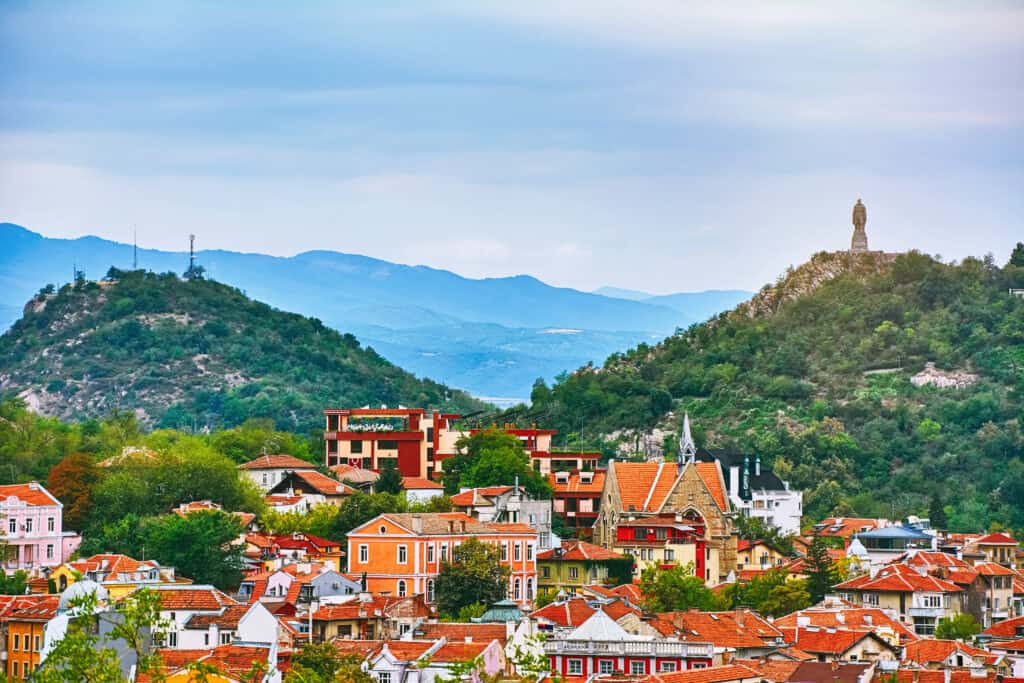
Plovdiv, Bulgaria is full of historic architecture predating its communist period.
©Sergej Razvodovskij/Shutterstock.com
Bulgaria is culturally and linguistically closer to Russia than most other parts of Eastern Europe, so much so that it at times was referred to as the “16th Republic” of the Soviet Union. As a free country today, it has joined the NATO alliance for protection from its former superpower partner.
10. Burkina Faso (1983-1987)
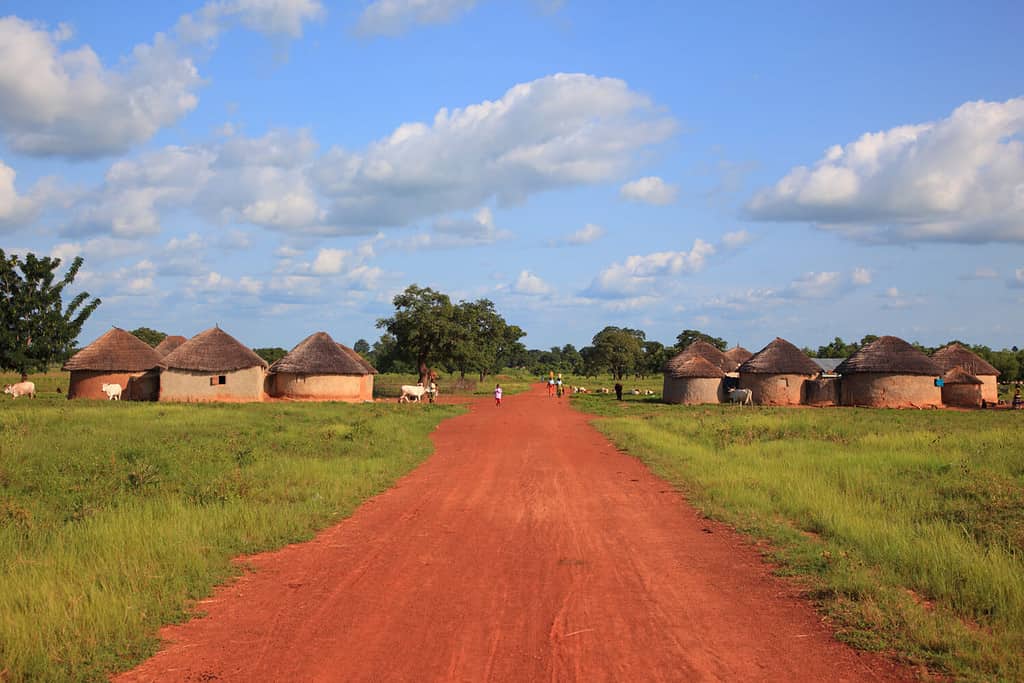
In villages in Burkina Faso people still live much as they did generations ago.
©Dmitry Trashchenko/Shutterstock.com
Burkina Faso is a landlocked country in West Africa. It is one of the world’s poorest countries and has endured numerous changes of government through coups. It had a communist regime from 1983-1987.
11. Cambodia (1975-1979)
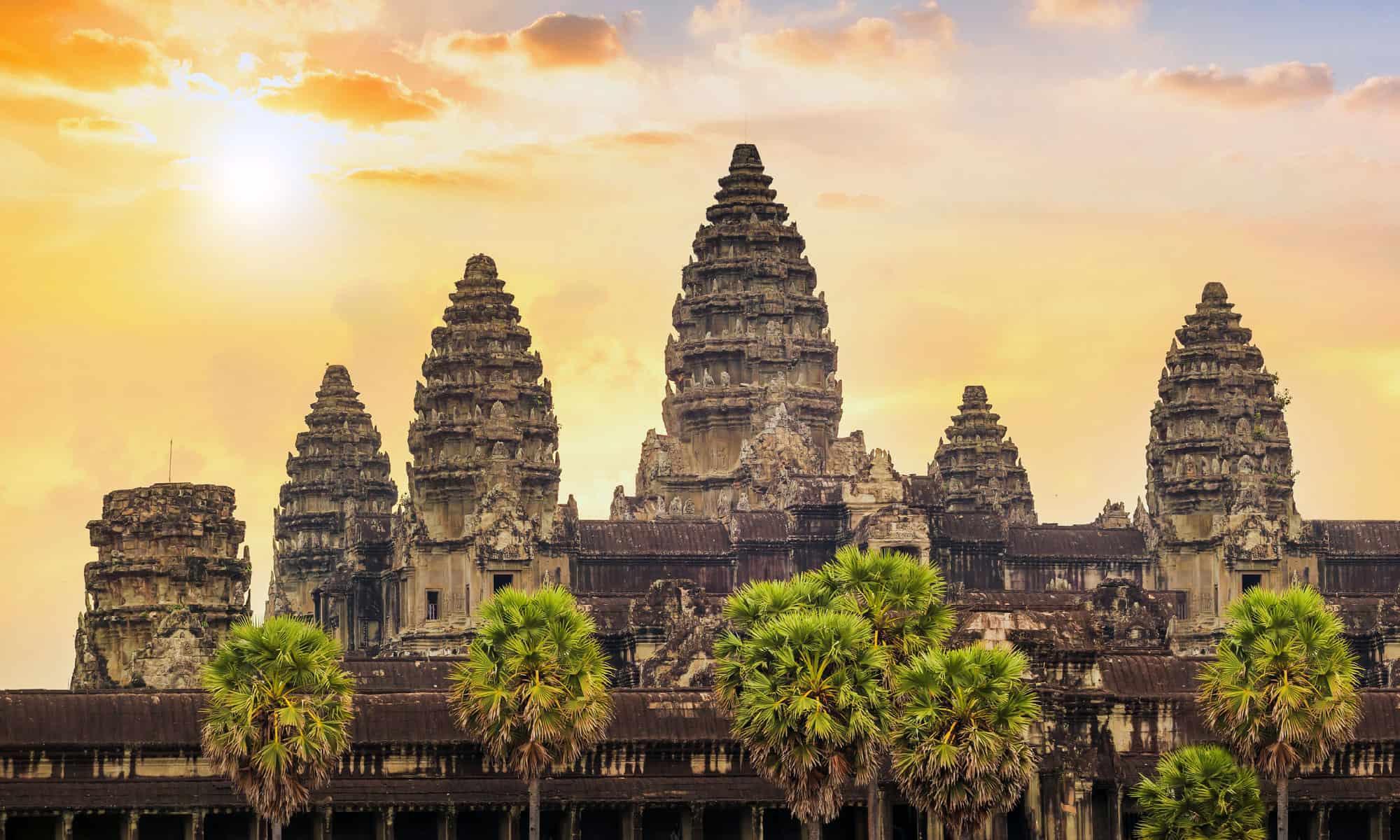
Angkor Wat is a world-famous cultural site in Cambodia.
©iStock.com/f11photo
An insurgency group known as the Khmer Rouge fought an armed insurgency and took control of Cambodia from 1975-79. It was notorious for killing at least 1.7 million Cambodians under its reign of terror. It came to an end when Vietnam invaded to install a more friendly government.
12. Croatia (1945-1992)

Croatia draws tourists with its extensive coastline on the Adriatic Sea.
©iStock.com/xbrchx
As a part of Yugoslavia, Croatia was communist until it won independence in a civil war in 1992. It controls most of the coastline of the former Yugoslavia, which gives it an advantage in trade and tourism.
13. Czech Republic (1948-1989)
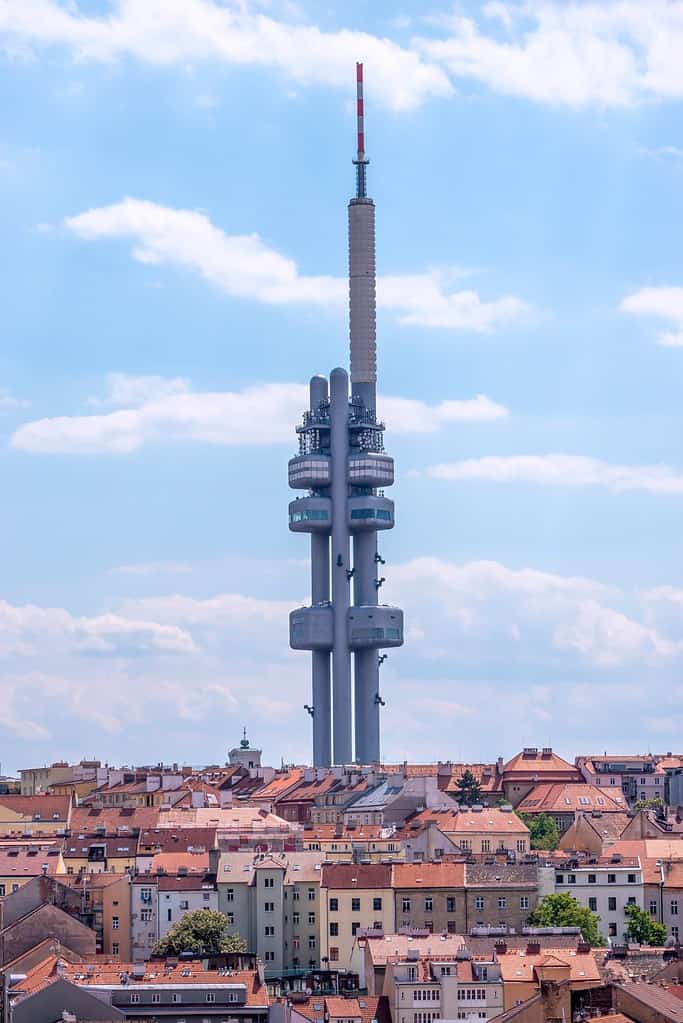
The Žižkov Television Tower is a controversial communist-era construction in historic Prague.
©Rymma Kholmanska/Shutterstock.com
The Czech Republic, formerly part of Czechoslovakia, was forced to become communist after World War II by occupying Soviet troops. Its efforts to liberalize were brutally crushed by a Russian invasion in 1968. Along with much of the rest of Eastern Europe, it threw off communism in 1989.
14. East Germany (1949-1990)

The Berlin Wall was one of the most powerful symbols of the divisions of the Cold War.
©pio3/Shutterstock.com
In 1945, the victorious allies divided Germany into zones of occupation that were intended to be temporary but resulted in two separate countries. The German Democratic Republic (East Germany) was the communist creation of the Soviet Union. In 1990, it peacefully reunited with the Federal Republic of Germany (West Germany).
15. Estonia (1940-1990)

Tallinn, Estonia, is a medieval city that shows its cultural connections to Scandinavia.
©Oleksiy Mark/Shutterstock.com
Estonia is one of three Baltic States that were illegally occupied and annexed by the Soviet Union under an agreement between Stalin and Hitler to divide the region between themselves. When the USSR collapsed, Estonia took the opportunity not only to declare independence, but to join NATO for protection from future Russian encroachment.
16. Ethiopia (1974-1991)
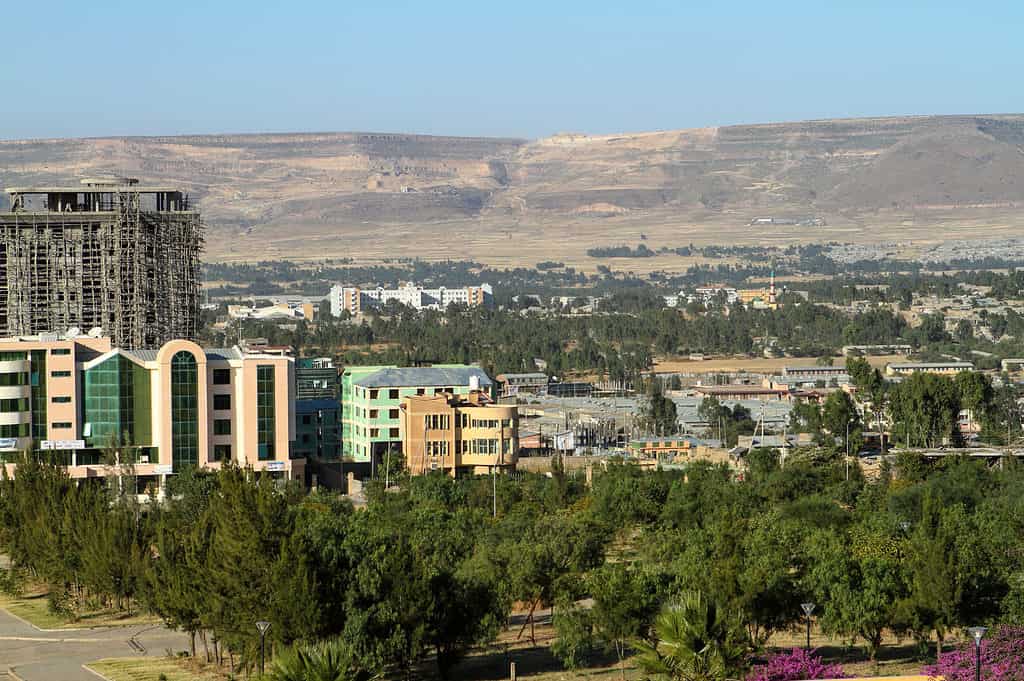
The city of Mek’ele in Ethiopia
©iStock.com/heckepics
Ethiopia, a large country in the Horn of Africa, was communist from 1974-1991. In recent years it has been embroiled in civil war that has led to the independence of Eritrea and is currently focused on the region of Tigray.
17. Georgia (1921-1991)
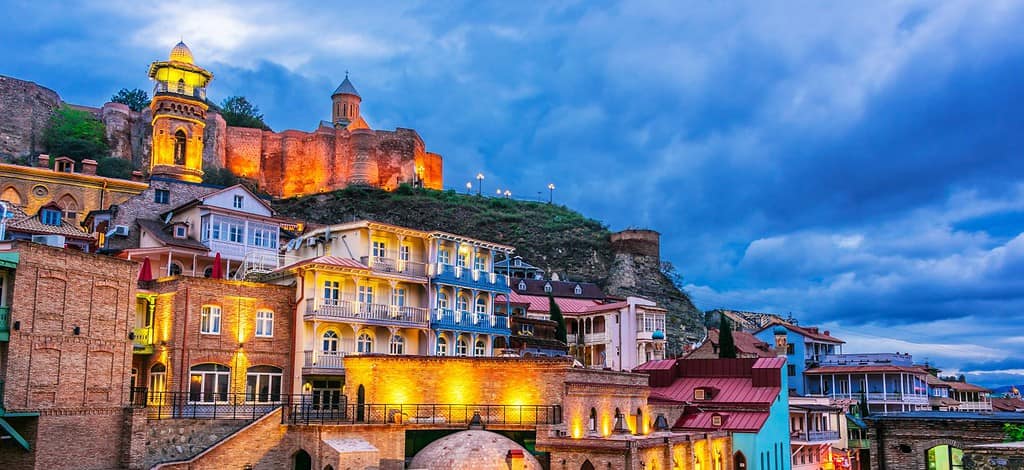
View of the Old Town of Tbilisi, Georgia.
©monticello/Shutterstock.com
Georgia is an ancient civilization in the Caucasus mountains situated between Russia and Turkey. Communist during its years as a Soviet republic, Georgia today is independent but heavily threatened by Russia, which has invaded it to established separate autonomous enclaves for pro-Russian ethnic minorities.
18. Grenada (1979-1983)

St. George’s is the capital of Grenada.
©Andreas Voelkel/iStock via Getty Images
The peace of the Caribbean island of Georgia was shattered when a communist government came to power in 1979 and began to welcome advisors and assistance from Cuba and the Soviet Union. Among other things, these communist powers began building a large military-grade airport. The United States invaded the island in 1983 to expel its rivals and install a more friendly government.
19. Hungary (1949-1989)
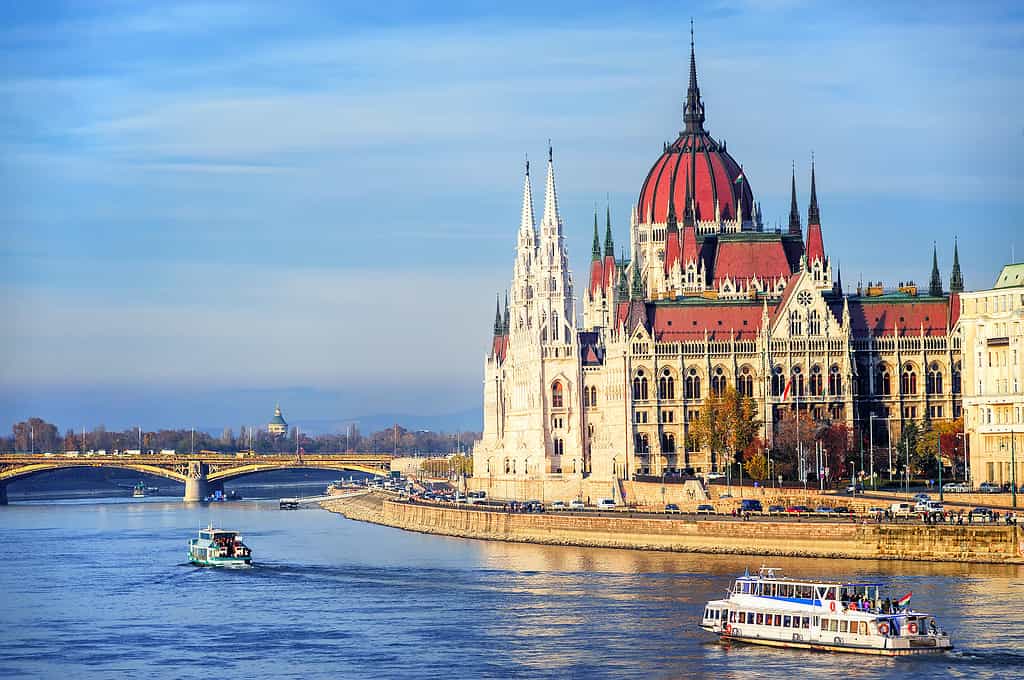
The Parliament building on the Danube river, Budapest, Hungary.
©Xantana/iStock via Getty Images
Hungary was forced to adopt a communist government during the post-World War II occupation by the Soviet Union. Any hope of independence was crushed by another Russian invasion in 1956. However, as the USSR reached a fatally weak point, Hungary was able to throw off communism and transition to democracy, free market economics, and membership in Western institutions and security structures.
20. Kazakhstan (1920-1991)
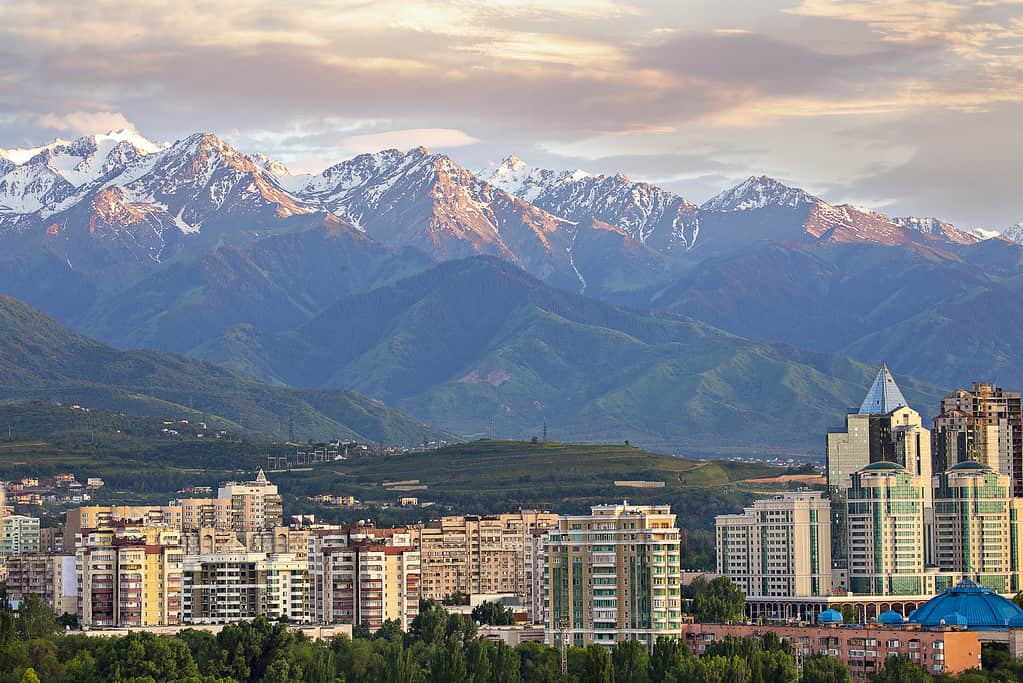
Almaty, Kazakhstan was the country’s former capital. A new capital city, Astana, has since replaced it.
©Ozbalci/iStock via Getty Images
Kazakhstan is the largest of the former Soviet republics in Central Asia. It abandoned communism when the Soviet Union broke up in 1991. It also agreed to give up all the nuclear weapons in its territory that had been placed there by the Russians.
21. Kosovo (1945-1992)
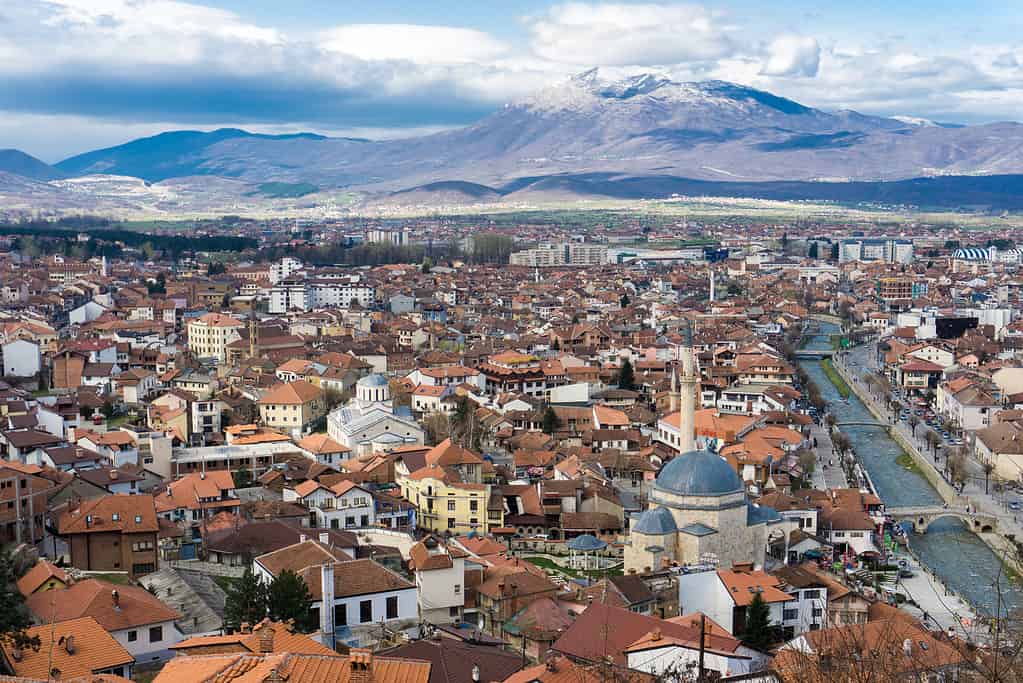
Prizren, Kosovo is the second-largest city in the country.
©Scott Biales/iStock via Getty Images
Kosovo was a part of Serbia and followed its communist path from 1945-1992. An ethnically Albanian region, it suffered from Serbian ethnic cleansing practices. NATO intervention helped it achieve and maintain independence from Serbia.
22. Kyrgyzstan (1917-1991)

Rugged mountains, glaciers, and alpine valleys are characteristic of Kyrgyzstan.
©Danita Delimont/Shutterstock.com
Kyrgyzstan was a communist republic of the USSR from 1917-1991. As an independent country today, it does not have as much farmland or the oil reserves of other parts of Central Asia, so its development is challenging.
23. Latvia (1940-1990)
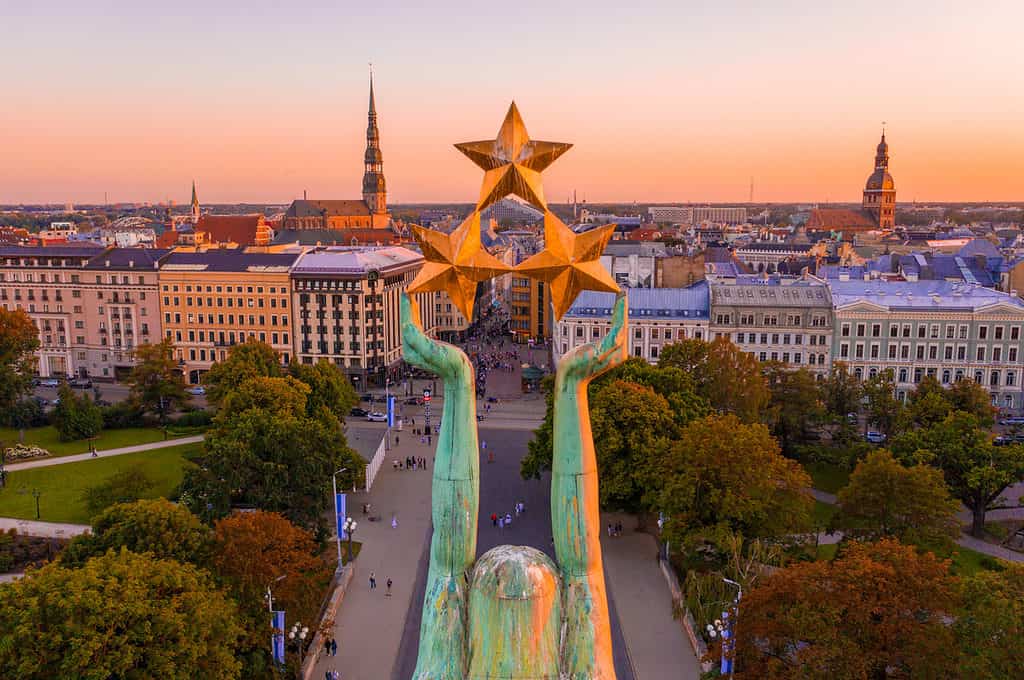
Around Latvia there are still remnants of Soviet-era monuments and iconography.
©iStock.com/Wirestock
Latvia is the centermost of the three Baltic States. With its port of Riga, it is arguably the most strategically important of the three. Along with its neighbors, it declared independence from the Soviet Union in 1990 and quickly moved to join the NATO alliance for its defense.
24. Lithuania (1940-1990)
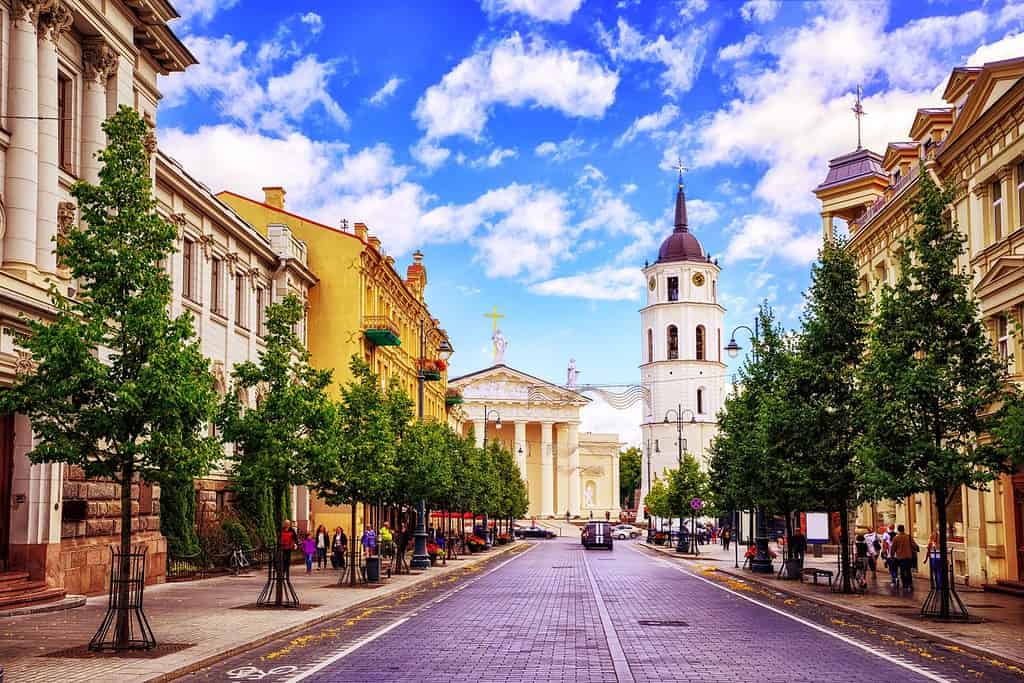
The historic cobblestone streets in parts of Lithuania make it a charming tourist destination today.
©Boris Stroujko/Shutterstock.com
Lithuania was once quite a large and powerful kingdom in Eastern Europe, eventually merging with Poland into a state rivaled in size only by Russia itself. Illegally annexed and subjected unwillingly to a communist government, Lithuania took the first opportunity it could to free itself and join neighboring Poland as a member of NATO.
25. Mongolia (1921-1990)

Many people in Mongolia continue living a traditional way of life.
©iStock.com/Katiekk2
Mongolia is landlocked between Russia on one side and China on the other. It became communist in 1921 under the influence of Russia and stayed dependent on it to prevent being absorbed into China, which had ruled it in the past.
26. Montenegro (1945-1992)
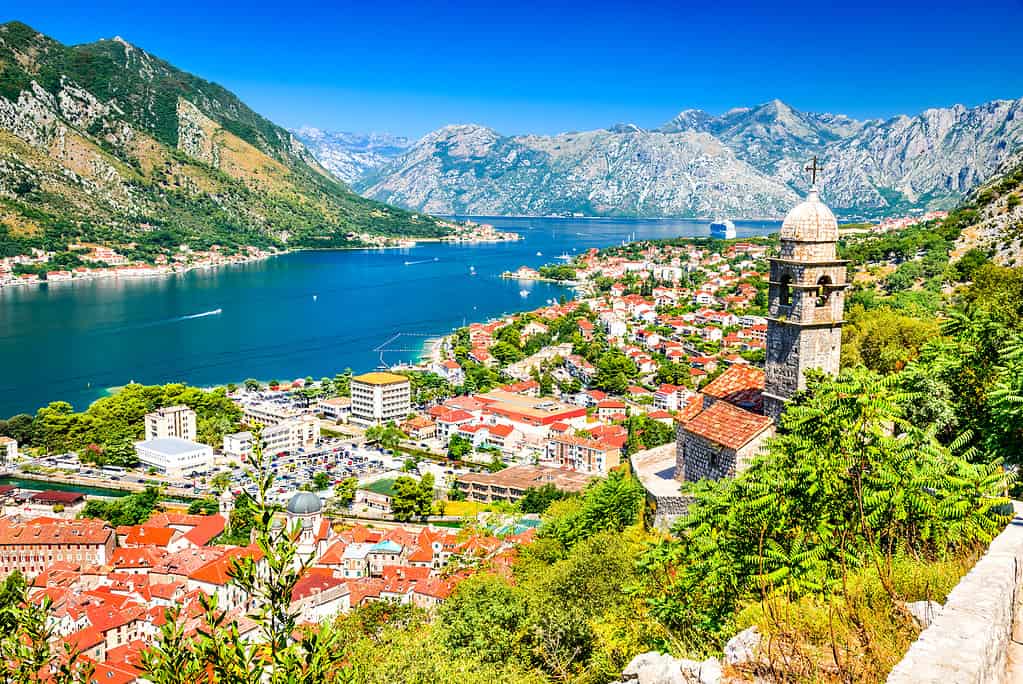
Montenegro is a land of mountains and beautiful lakes.
©emicristea/iStock via Getty Images
A small country just north of Albania, Montenegro was a part of communist Yugoslavia until the country changed its ideology in 1992. It was one of the last parts of Yugoslavia to declare independence, achieving it in 2006.
27. Mozambique (1975-1990)
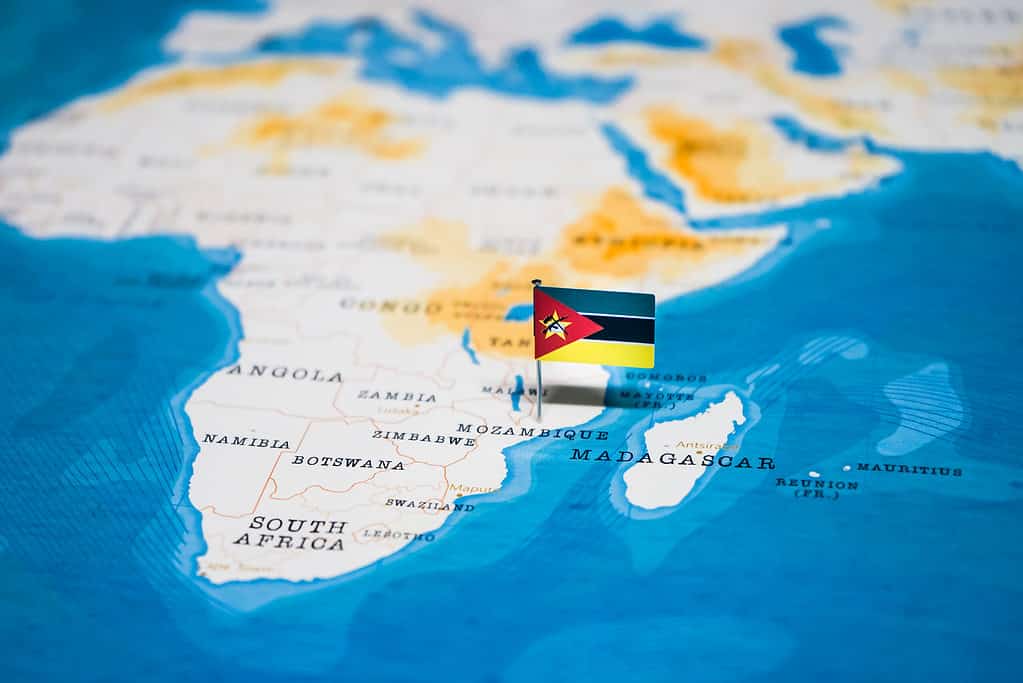
Mozambique was a former Portuguese colony.
©Hyotographics/Shutterstock.com
Communists took over Mozambique when it became independent of Portugal in 1975. Like many other countries, it abandoned communism in 1990 as countries in Eastern Europe rapidly rejected the system.
28. North Macedonia (1943-1991)
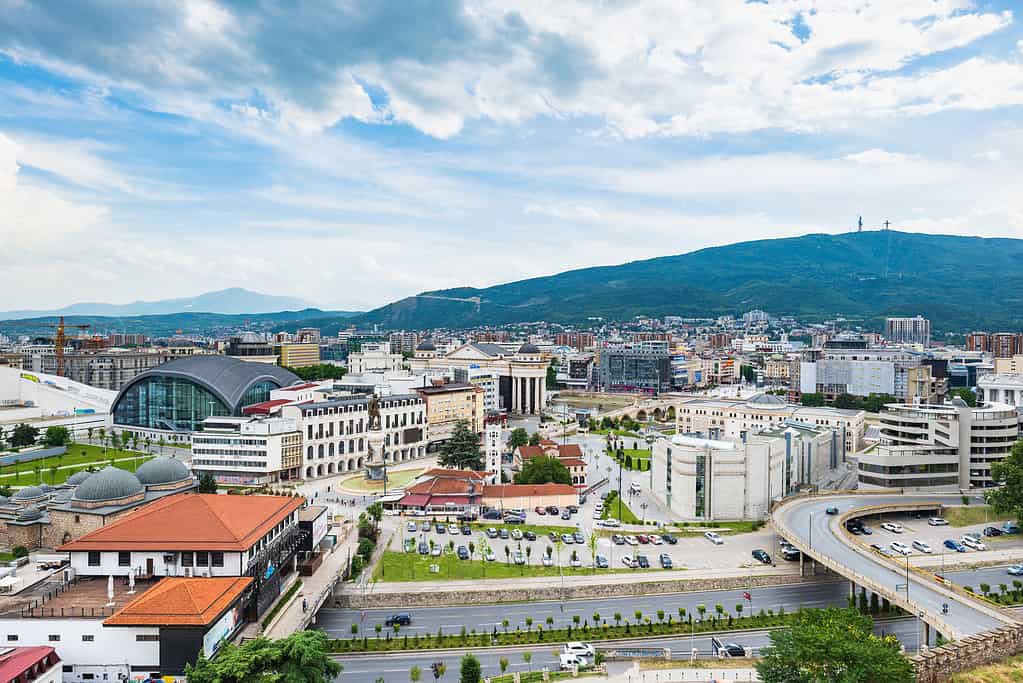
Skopje is the capital of North Macedonia.
©uskarp/iStock via Getty Images
Communist as part of Yugoslavia, North Macedonia abandoned the ideology upon independence in 1991. Naming the country was a problem as neighboring Greece did not want it to make any territorial claims on its own Macedonian region. The current name emerged as a compromise.
29. Poland (1947-1989)
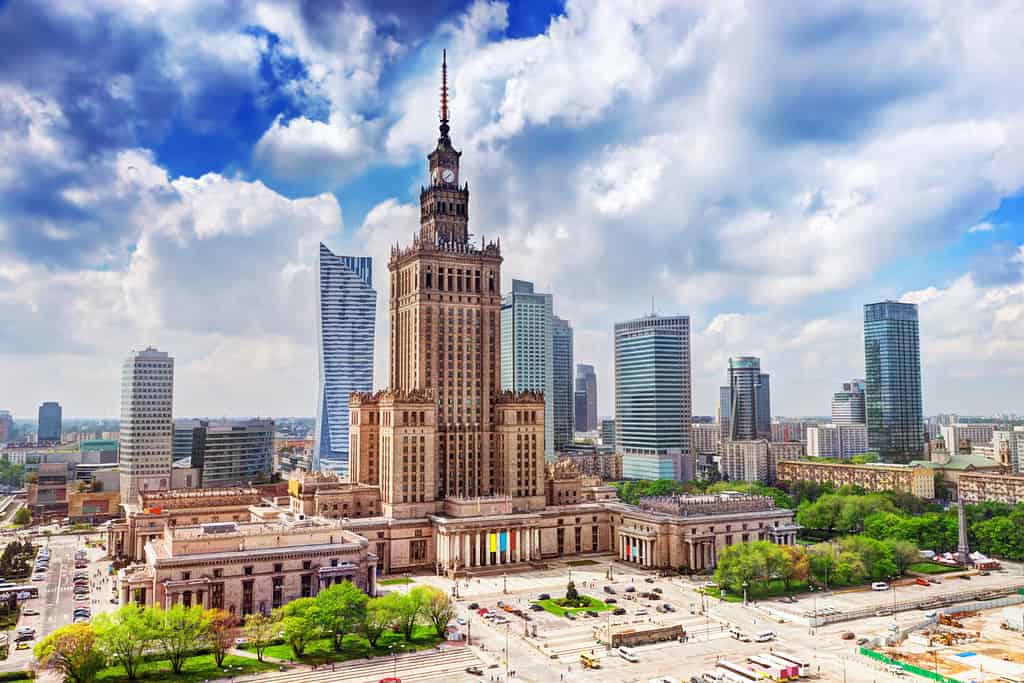
The Palace of Culture is a controversial Stalinist-era skyscraper in Warsaw.
©PHOTOCREO Michal Bednarek/Shutterstock.com
After World War II, the entire country of Poland was shifted west, with eastern lands transferred to the Soviet Union, compensated by German territory on the other side of the country. The breakup of communism in Eastern Europe began with strikes by industrial workers in Gdansk, Poland.
30. Republic of the Congo (1969-1992)

The Nabema Tower is an iconic office building in Brazzaville, Republic of the Congo.
©mbrand85/Shutterstock.com
The People’s Republic of the Congo was the first communist country established in Africa. It transitioned to a multi-party democracy after the collapse of the Soviet Union in 1991.
31. Romania (1947-1989)
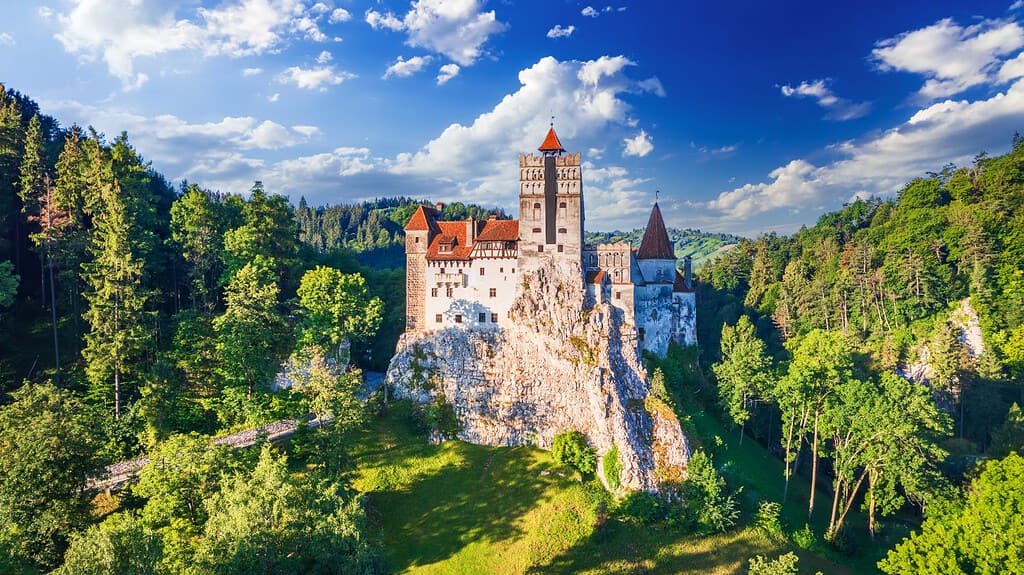
Bran Castle in Romania, is associated with the “Dracula” myths.
©ecstk22/Shutterstock.com
When the Soviet Union occupied Eastern Europe after World War II, it imposed a communist government on Romania. This was overthrown in a violent revolution in 1989. Today Romania is thoroughly aligned with the West as a member of NATO and the EU.
32. Russia (1917-1991)
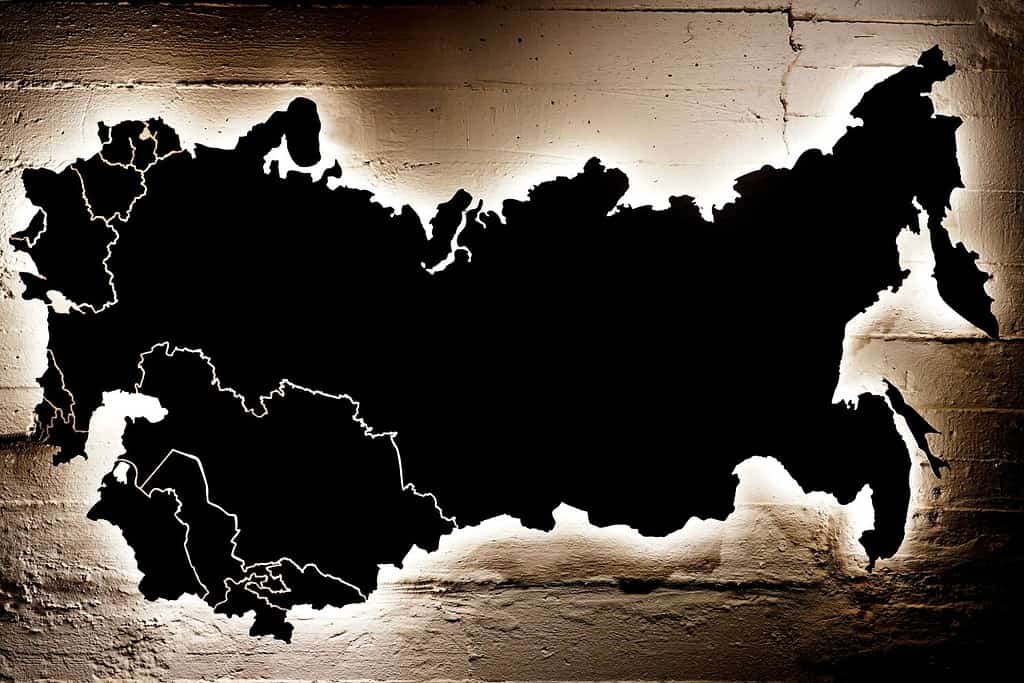
At the collapse of communism, the Soviet Union broke up into 15 independent nations.
©mbond77/Shutterstock.com
Russia was the first country to be ruled by communists, who renamed the empire the “Union of Soviet Socialist Republics,” or “Soviet Union.” After winning a brutal civil war, the communist leadership went on to build the country’s industrial and military might. After World War II, the Soviets developed nuclear weapons and contested the United States and other Western powers for influence and leadership around the world. Communism collapsed and the country broke up into 15 separate countries after a largely failed economic and social reform experiment by the last Soviet leader, Mikhail Gorbachev.
33. Serbia (1945-1990)

The Serbian Orthodox Church is a deep core of the country’s culture.
©Vladimir Nenezic/Shutterstock.com
Serbia was the dominant region of Yugoslavia, which was communist until 1990. It was seen internationally as the aggressor in the Yugoslav Wars, which resulted in NATO military action to impose an uneasy peace settlement.
34. Slovakia (1948-1989)
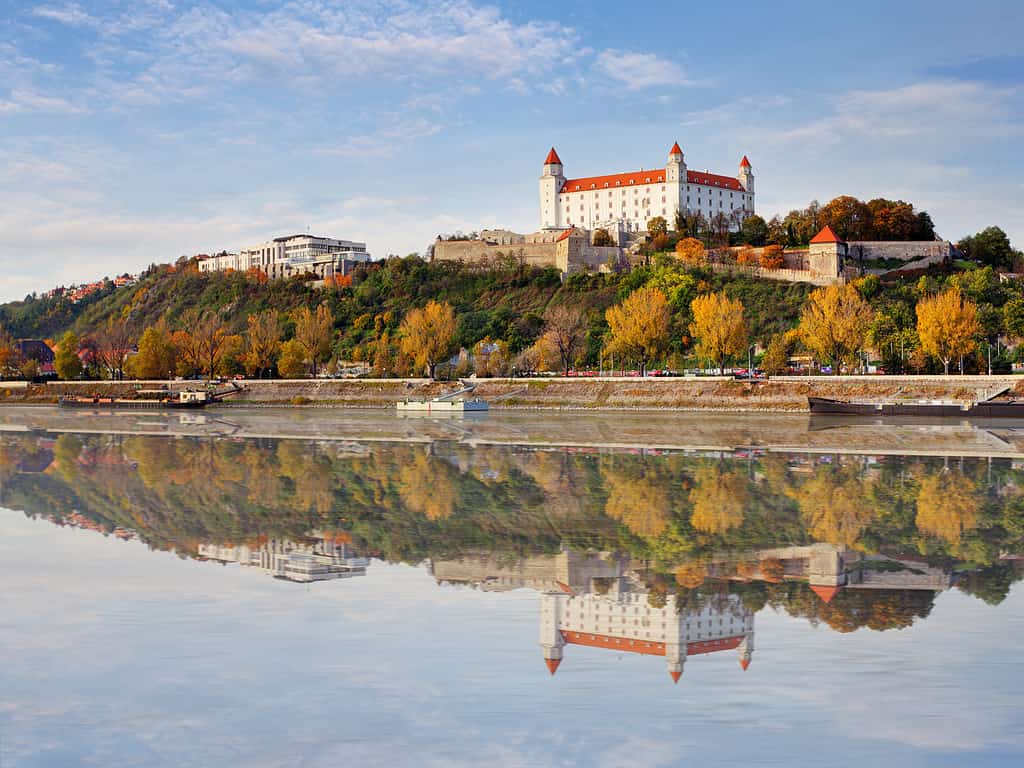
Historic architecture is one of the tourist draws to Slovakia.
©TomasSereda/iStock via Getty Images
Slovakia was part of Czechoslovakia until the country peacefully divided in 1993. It was communist from World War II until 1989. Today it is part of NATO and the EU, thoroughly integrated into the West and its ideologies.
35. Slovenia (1945-1991)
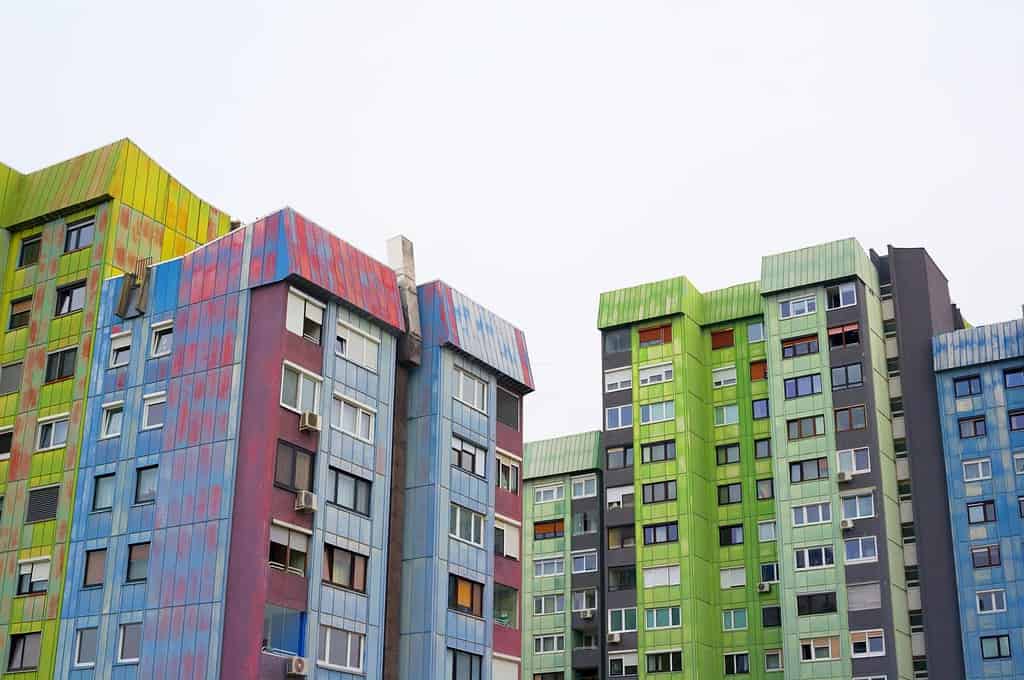
Slovenia today is a mix of the old and the new.
©M-SUR/Shutterstock.com
As a part of Yugoslavia, Slovenia was communist from 1945 until its independence in 1991. Today is is a free-market democracy and a member of the European Union and NATO.
36. Somalia (1969-1991)
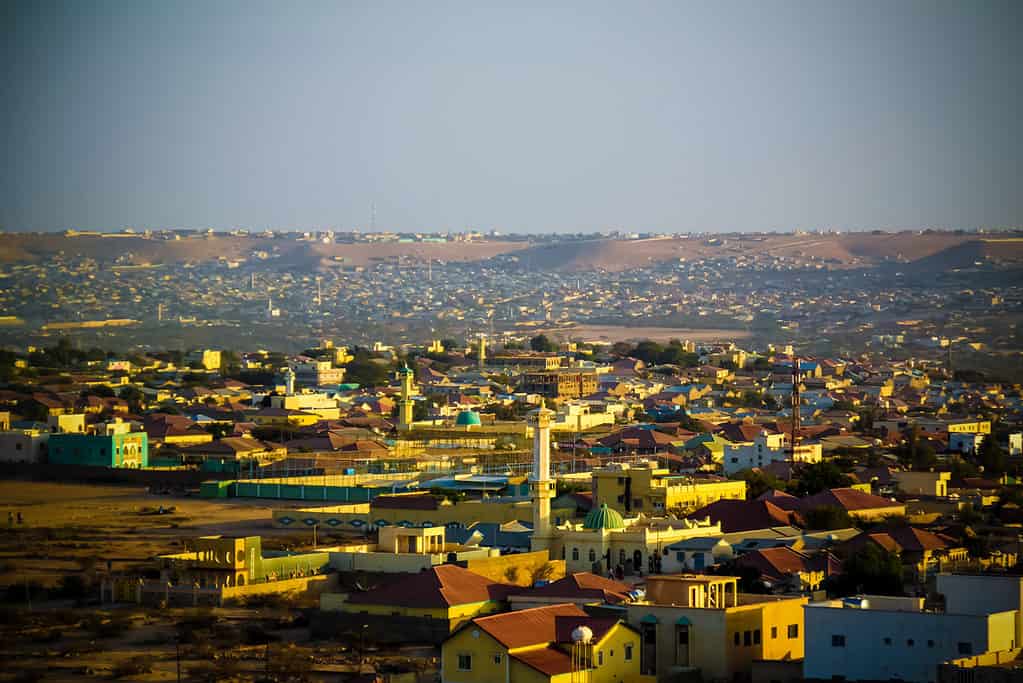
With a weak central government, regional power in Somalia is divided among powerful warlords.
©iStock.com/HomoCosmicos
Somalia became a communist country when Mohammed Siad Barre took power in a coup and signed a friendship treaty with the Soviet Union. In recent decades it has collapsed into civil war and has become a hotbed for terrorism, piracy, and other regionally destabilizing problems.
37. Tajikistan (1924-1990)
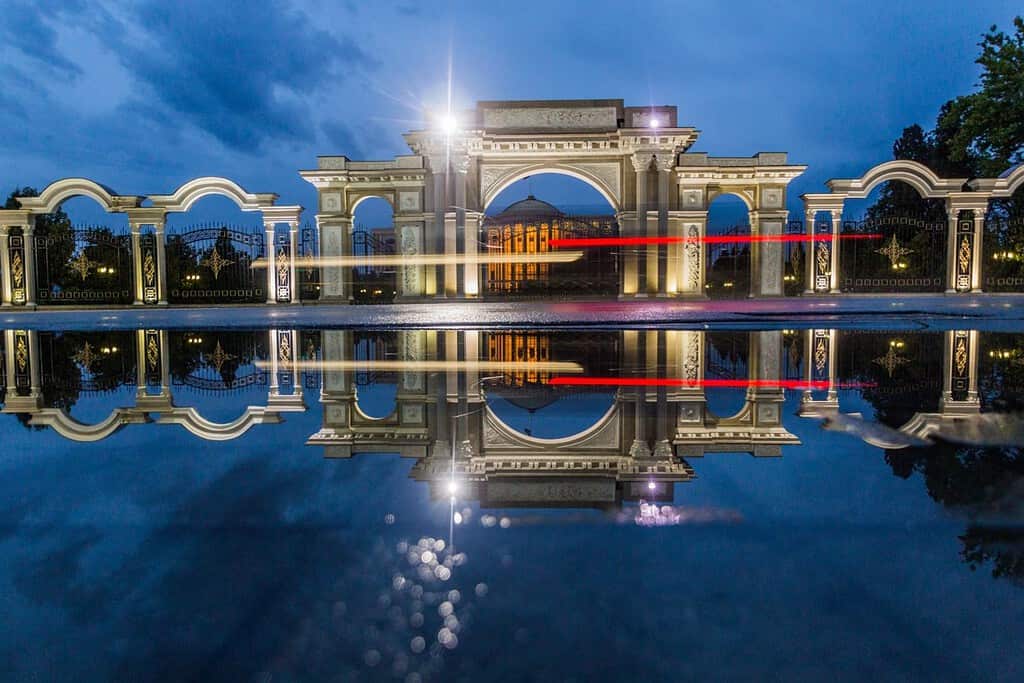
This is the Palace of Nations, the Presidential residence in Dushanbe, Tajikistan.
©Matyas Rehak/Shutterstock.com
Tajikistan was a part of Soviet Central Asia and was communist until its independence in 1990. A landlocked country wedged between Afghanistan, China, and several former Soviet republics, Tajikistan has a challenging security and development situation.
38. Turkmenistan (1924-1991)
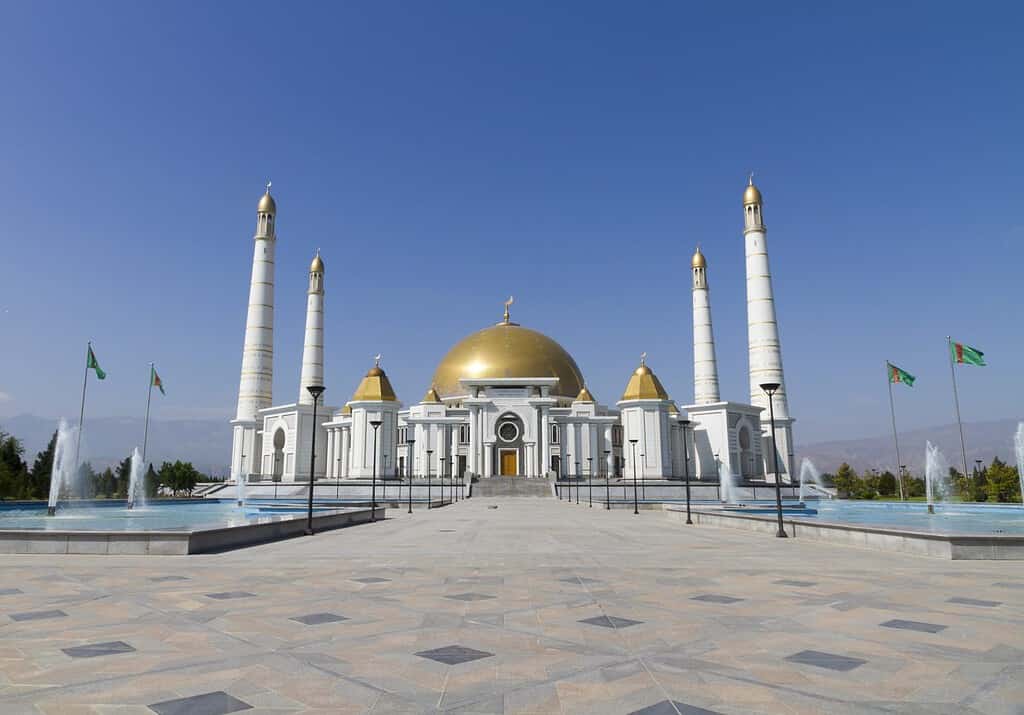
View of the Grand Mosque, Ashgabat, Turkmenistan.
©Darkydoors/Shutterstock.com
Turkmenistan was communist in its years as a part of the Soviet Union. It has abandoned that ideology but not the dictatorial aspects of the Soviet system. It is one of the most despotic dictatorships in the world today.
39. Uzbekistan (1925-1990)
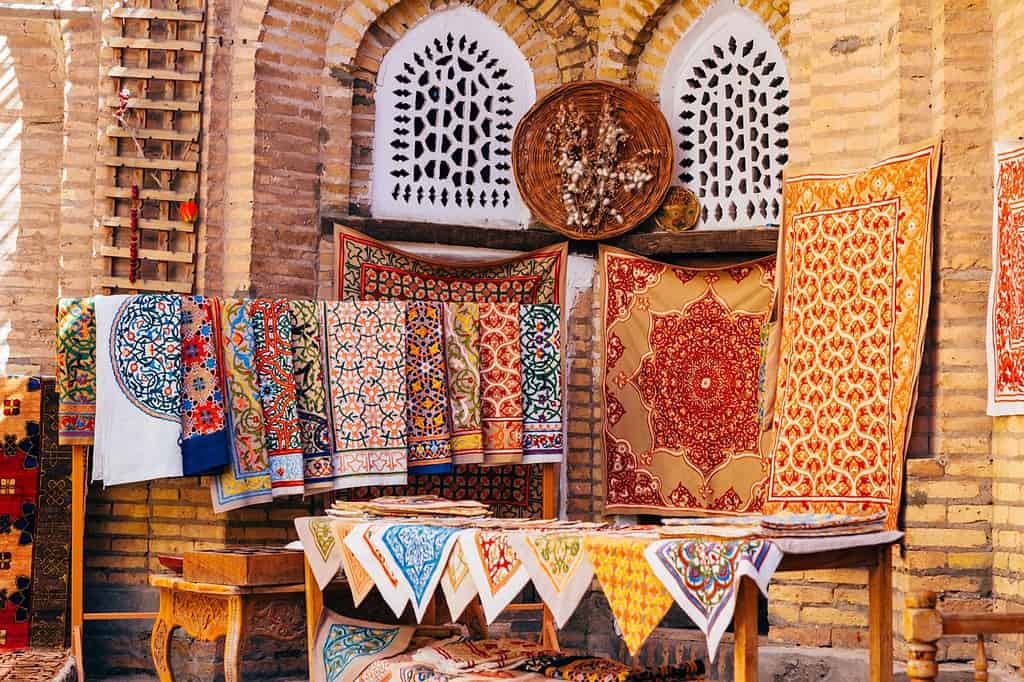
Uzbekistan is famous for its traditional carpets and textiles.
©Iryna Hromotska/Shutterstock.com
A part of Soviet Central Asia until 1990, Uzbekistan today is no longer communist. However, it is still an authoritarian country with civil rights problems. Cotton and natural gas are two of its major products.
40. Ukraine (1918-1991)
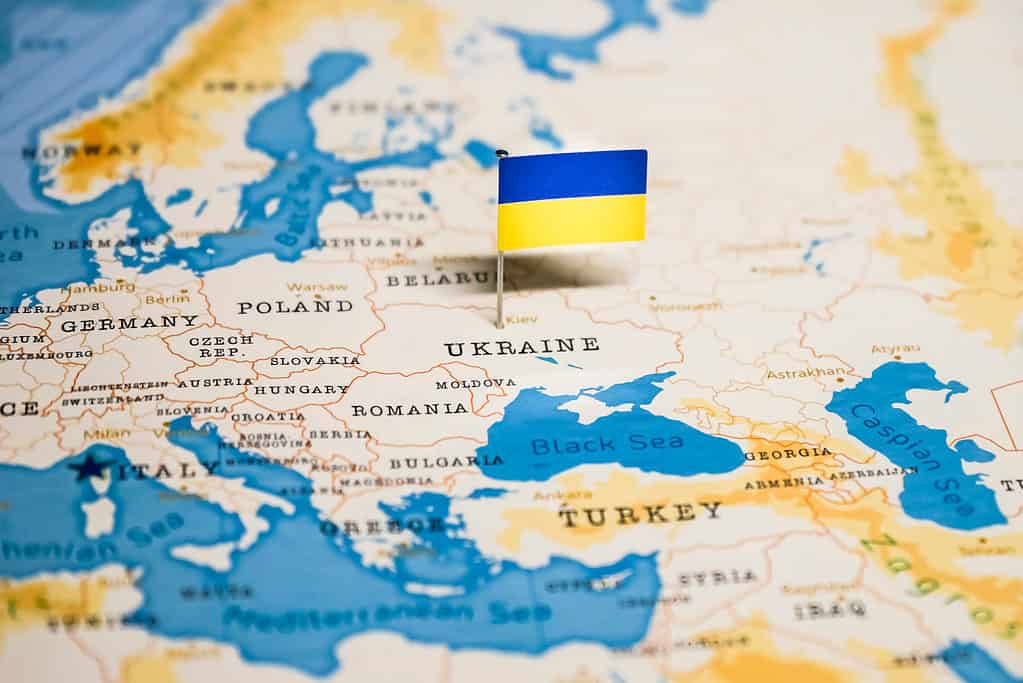
Ukraine is ground zero in the struggle for influence in Eastern Europe.
©hyotographics/Shutterstock.com
As a republic of the Soviet Union, Ukraine was communist until the Union collapsed in 1991. It is currently the focus of a brutal Russian invasion intended to keep it from aligning politically with the West and return it to Russian control.
41. Yemen (1967-1990)
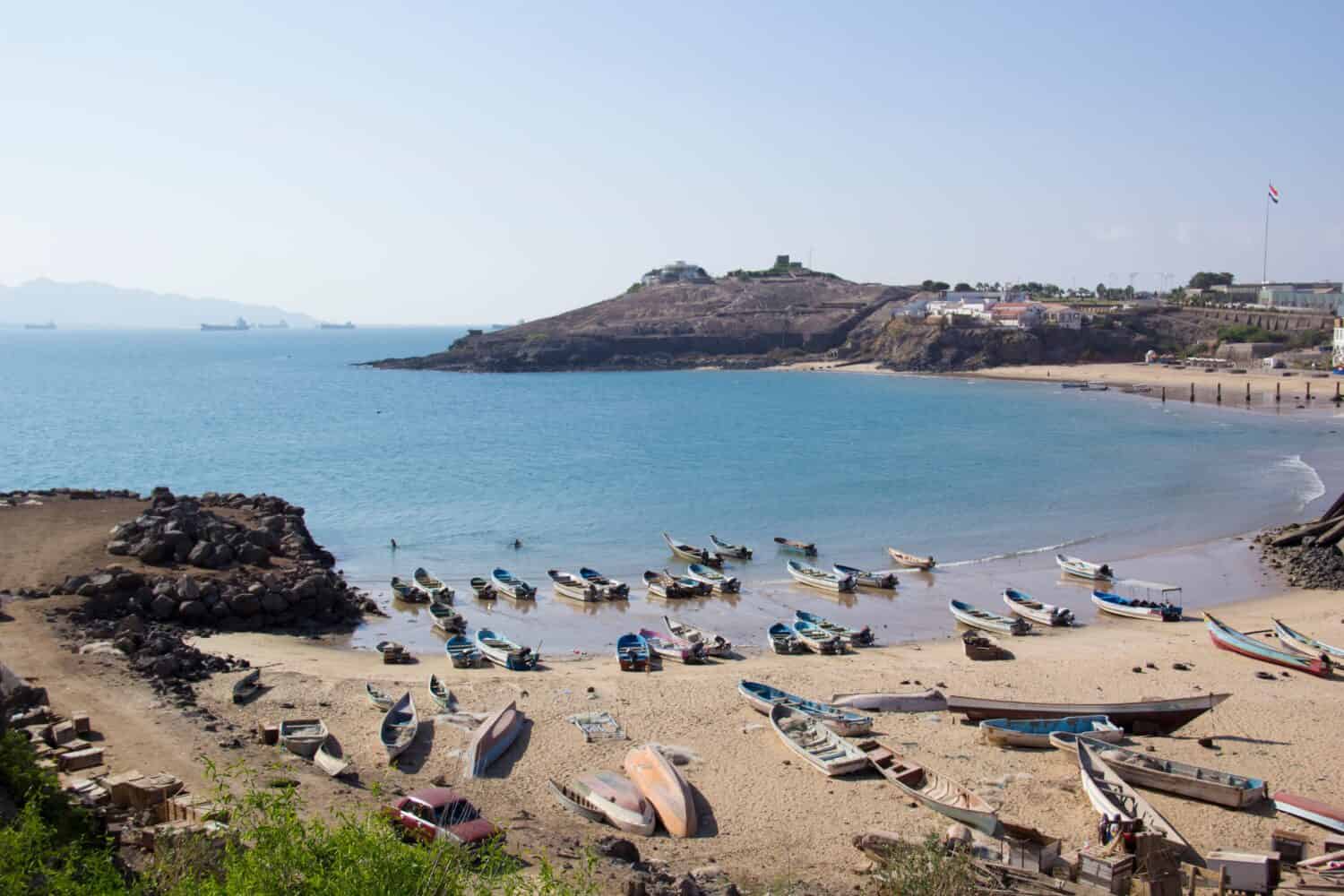
Yemen is strategically located on the Arabian and Red Seas.
©MarinaDa/Shutterstock.com
South Yemen was the only communist state in the Arab world. It reunited with North Yemen in 1990 and dropped its ideology. The union has been unstable, and in recent years, the country has endured a devastating civil war with opposite sides sponsored by regional powers.
5 Current Communist Countries

The luxury lifestyle available to China’s wealthy is far from anything envisioned in traditional communist ideology.
©Maridav/Shutterstock.com
Few countries today still call themselves communist. It has become evident that communist economics are unworkable at best. Communist countries have prospered only to the extent that they have been willing to implement at least limited free market principles and participate in global markets.
1. China (1949- )

Though under one-party Communist rule, China has liberalized its economy to allow foreign investment and explosive business growth.
©dailin/Shutterstock.com
Mao Zedong led the communists to victory in China’s civil war in 1949. After the Cultural Revolution, a destructive experiment in social transformation, China’s new leaders began to liberalize the economy while maintaining strict social control. China today is rapidly emerging as a global power.
2. Cuba (1959- )
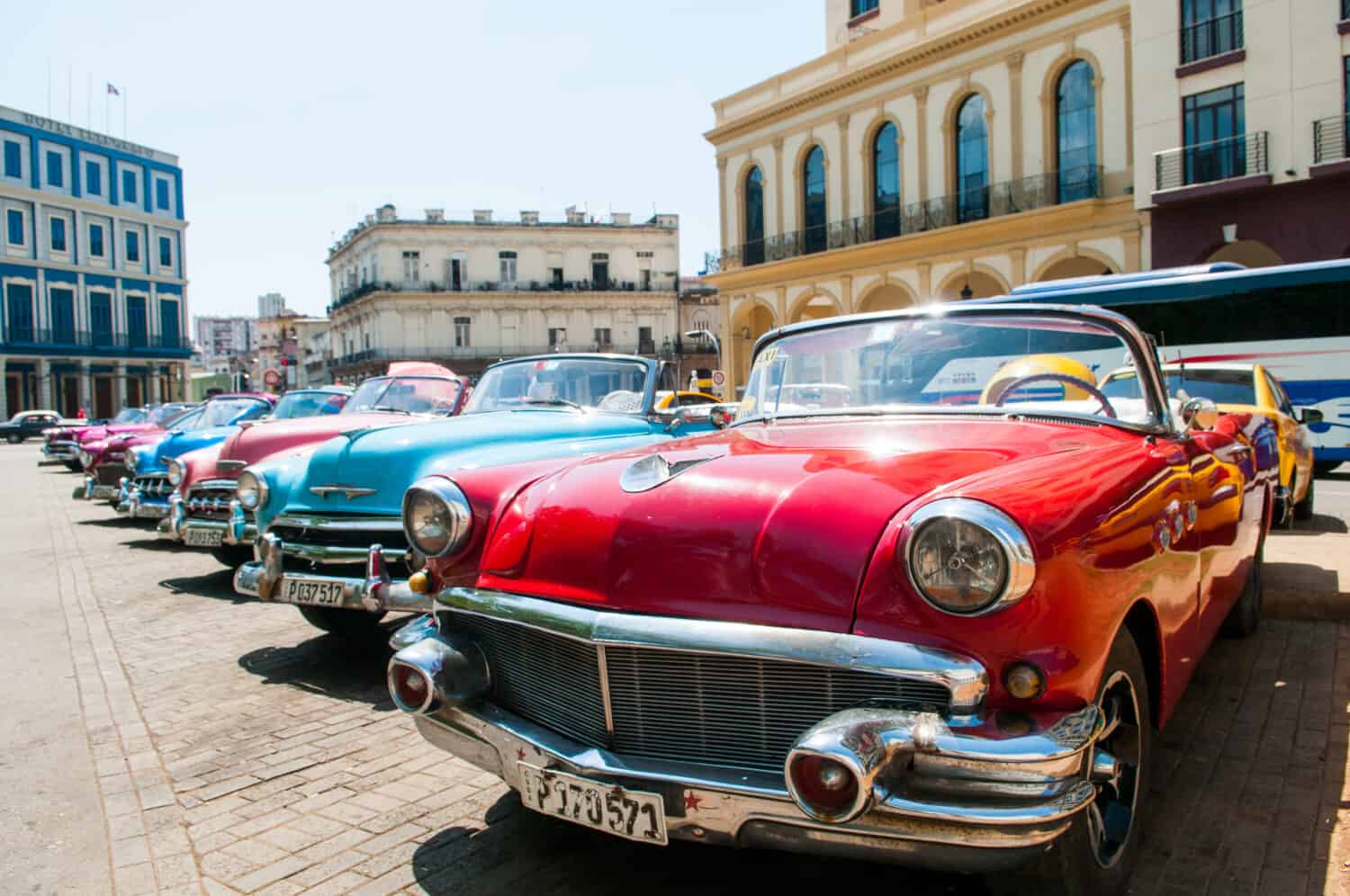
Under decades of U.S. sanctions, Cuba has maintained its fleet of 1950s-era cars rather than importing new ones.
©Suzanne Tenuto/Shutterstock.com
Cuba became communist in 1959 in a revolution led by Fidel Castro. The Russians placed nuclear missiles there and nearly went to nuclear war with the United States in 1962. Cuba is still a communist country today and remains under a crushing American economic embargo.
3. Laos
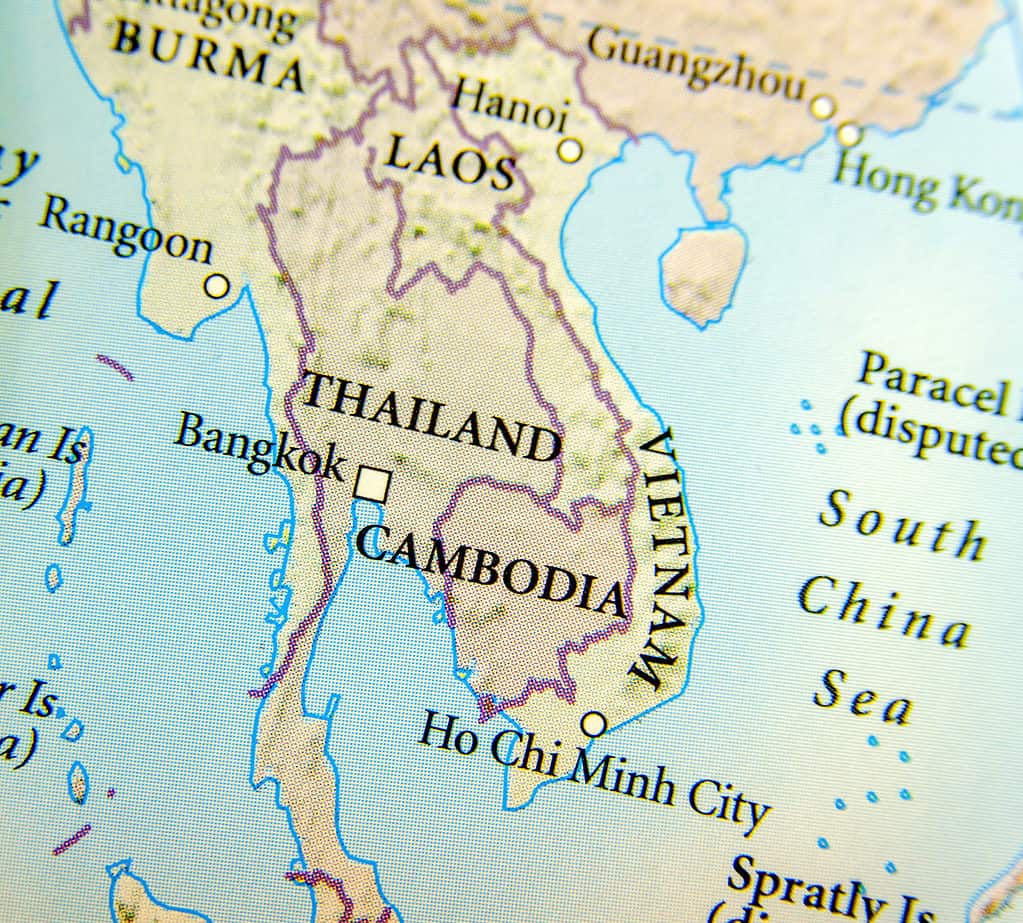
A mountainous, landlocked country, Laos faces many challenges in its development.
©Bennian/Shutterstock.com
In 1975, a civil war brought a communist government to power in Laos. The country was dependent on Vietnam until recent years, when it liberalized its economy and began receiving international development assistance.
4. North Korea (1948- )

North Korean propaganda is reminiscent of the Cold War.
©Astrelok/Shutterstock.com
Officially, North Korea has changed its constitution to remove all references to communism and instead proclaims its ideology to be Juche, a quasi-religious doctrine that still retains most of the features of communism while emphasizing the State and its Supreme Leader.
5. Vietnam (1954- )
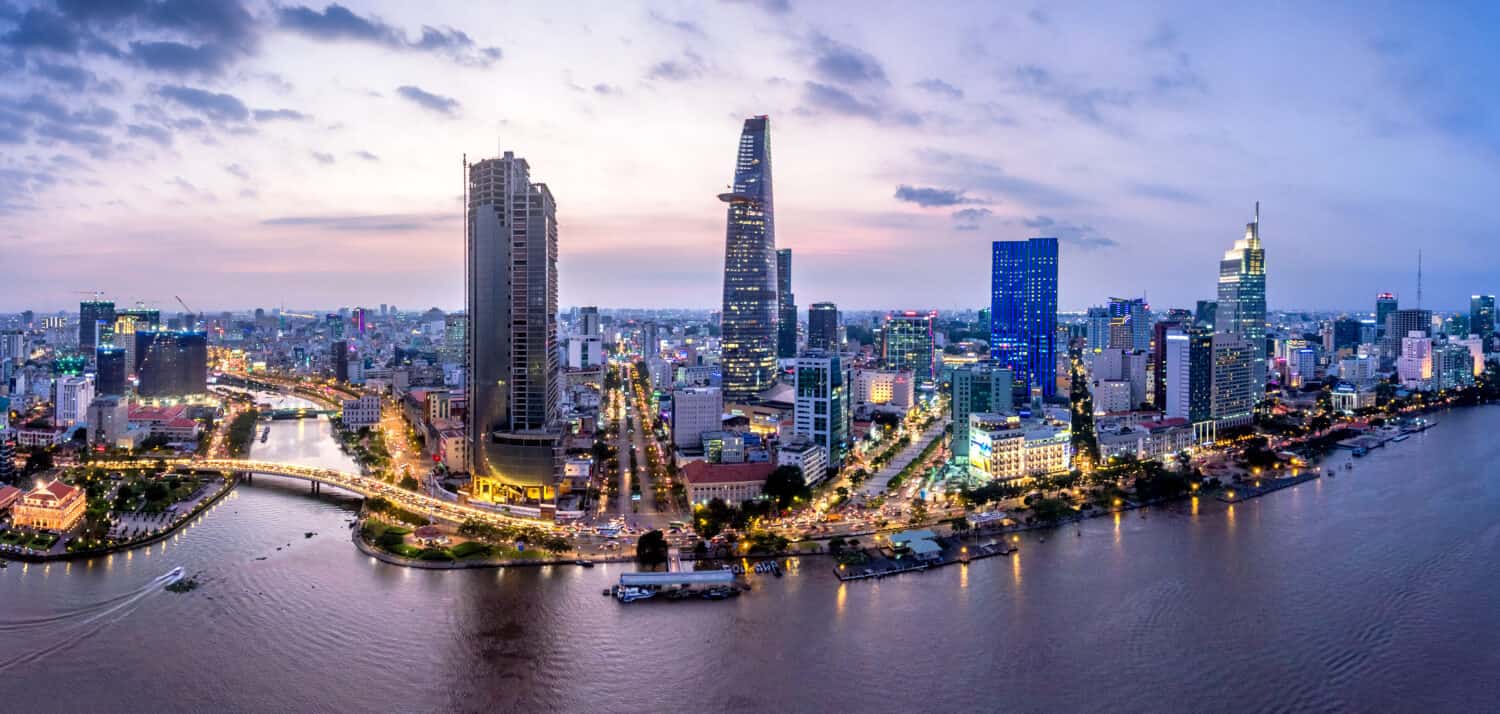
Ho Chi Minh City today is a thriving commercial center.
©Nguyen Quang Ngoc Tonkin/Shutterstock.com
North Vietnam became communist in 1954 under the leadership of Ho Chi Minh and went on to fight a decades-long war before successfully taking over South Vietnam in 1975. Despite the devastation of the war, Vietnam has introduced free market ideas and begun to prosper, as well as beginning to cooperate with the United States to counter China’s regional ambitions.
The photo featured at the top of this post is © Prachaya Roekdeethaweesab/Shutterstock.com
Thank you for reading! Have some feedback for us? Contact the AZ Animals editorial team.






